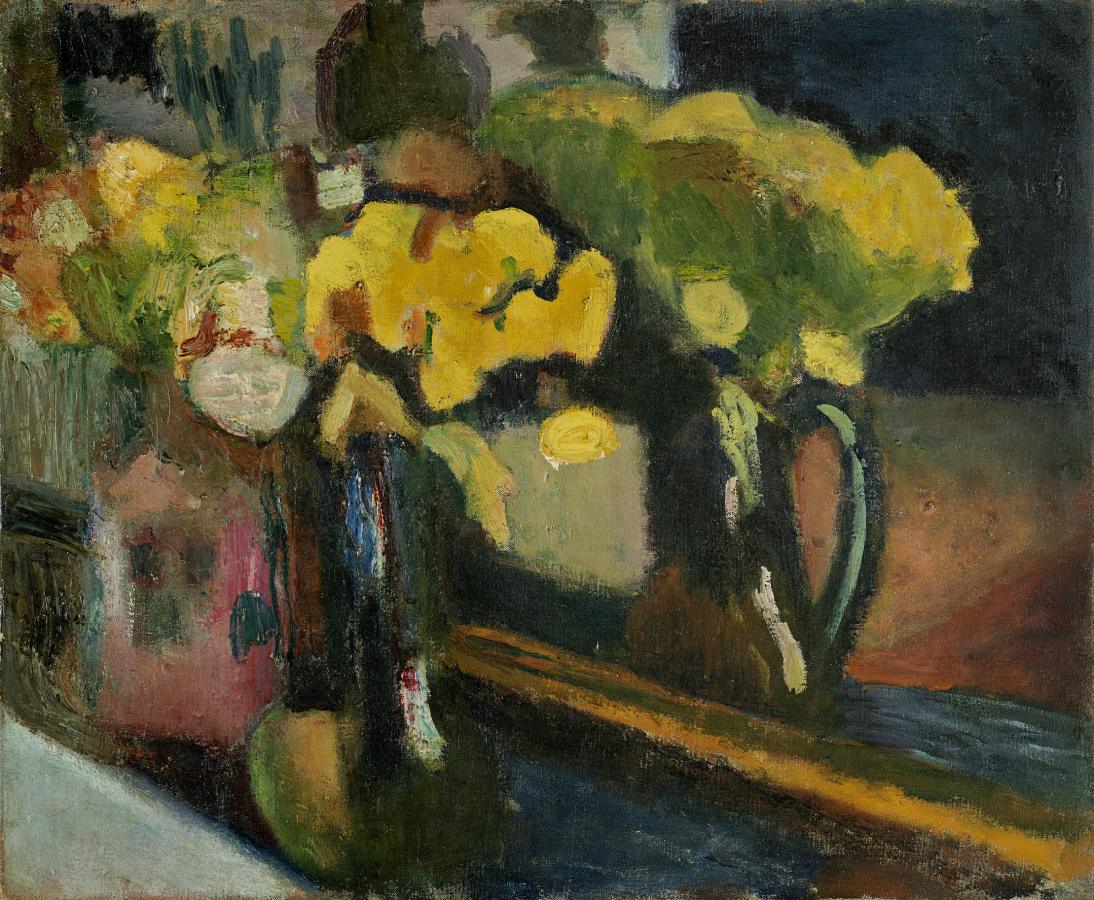Matisse, Henri (1869-1954)
Les fleurs jaunes (The Yellow Flowers)
1902
Oil on canvas, 46 x 54.5 cm
Museo Thyssen-Bornemisza, Madrid
©Succession H. Matisse / VEGAP, Madrid
Still-life paintings played a primordial role in Henri Matisse’s beginnings in art. During the first years of the century, in which he executed The Yellow Flowers, the early influence of Impressionism had begun to fade and the painting of the artist who would become the most brilliant colourist was experiencing what might be described as a sombre period. The despondency triggered by the scandalous bankruptcy of his parents-in-law, who had been his financial mainstay during the early years, and the influence of the Nabis dulled his palette and simplified his compositions.
As Hilary Spurling points out, in 1902 Matisse “produced a series of flower pieces […], small, inexpensive bunches of chrysanthemums or yellow ranunculus or ragged sunflowers, arranged in improvised vases and painted in the drab tones of his youthful palette.” However, the image of this vase of yellow flowers reflected in the mirror conveys a sensation of chromatic energy that foreshadows his Fauve works.
We know that the painter exhibited two still lifes, one landscape and three flower paintings at the 1902 Salon des Indépendants, but it is not possible to ascertain whether any is the work in the collection. We do know, however, that it was shown in the painter’s solo exhibition at the Galerie Bernheim-Jeune in Paris in 1910 with the title Flowers.
Paloma Alarcó (T-B)
